#arthurian mythology inspired
Text
I am throwing around ideas in my mind of like different planets/areas in Honkai Star Rail being inspired by the same places but the cultural different between them come from the specific different eras of their real life inspiration
For example, I'm p sure they confirmed in Famitsu, they confirmed the Xianzhou is based upon the Pre-Qin dynasty myth of Elixir of Immortality and with certain other influences in it, but imagine a planet separate from the Xianzhou Alliance, that is too inspired by China but a different point of inspiration than the Xianzhou
And I could give other ideas I have but my mind can't pin them all together
#I'm imagining yingxings home#Like#Hmmmm#I dunno I'm just coming up with ideas#I have a lot of ideas for potential planets to exist in the universe of hsr#Like there are probably more planets taking from British mythology/culture than just the Arthurian mythology inspired place of Gui's home#And maybe there are more places with Slavic (and maybe a few nordic) inspiration than just belobog#And im excited to see what inspirations we get in Penacony bc it seems very#Just looking at all of the angels and Sunday and everything#I'm just spitballing tho#With countless planets that won't all be uncovered#I think overlap might be inevitable#Hsr#honkai star rail
17 notes
·
View notes
Photo



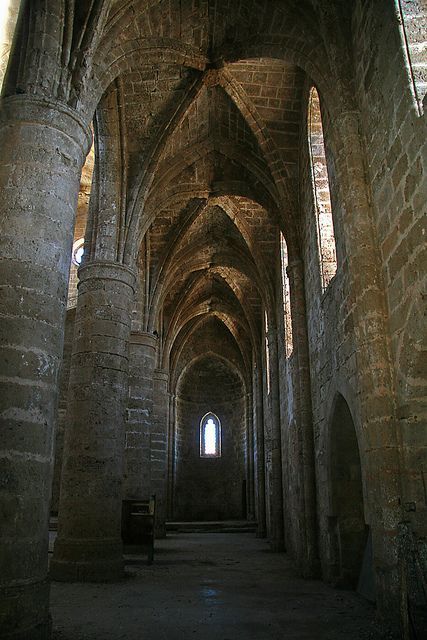

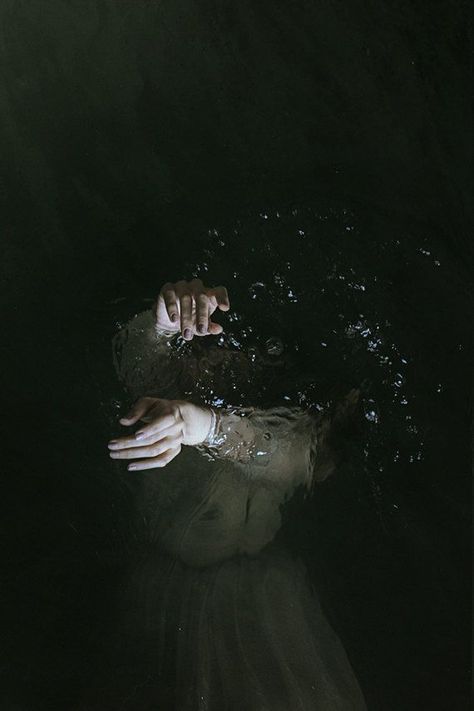


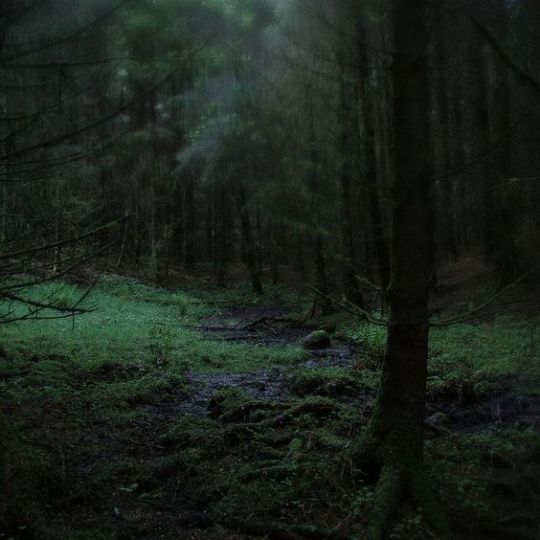
Silver in the Bone by Alexandra Bracken Aesthetic
Break the curse before it breaks you....
#silver in the bone#alexandra bracken#arthurian mythology#arthurian aesthetic#arthurian inspired#bookish#book aesthetic
8 notes
·
View notes
Text
Books I'm excited to read:
The Lost Queen by Signe Pike
The Children of Gods and Fighting Men by Shauna Lawless
Spear by Nicola Griffith
Books I need to pick up and read from the beginning because life got in the way:
Sistersong by Lucy Holland
#hobbit talks#andy rambles#bookblr#mythology inspired#arthurian inspired#funny about all of these is that they're right up my alley and have something to do with Tirinth#i need to get back into the groove of things#books to read
0 notes
Text
Why marry Arthur Pendragon?
💍Gender selectable! (Marry Elaine Pendragon instead!)
🥲 Make your father proud!
💰 Get rich-quick-scheme!
🫅 Marry a fellow royal worthy of you!
🏰 Gain a barony!
🛏️ Optional affair!
💘 True love?
#choicescript#hosted games#arthurian#interactive fiction#arthurian literature#if game#arthurian legend#arthurian mythology#arthurian fantasy#dashingdon#arthur pendragon#arthurian romance#king arthur
153 notes
·
View notes
Text
Look, I love BBC Merlin and how they told the lore, but I’m a sucker for the relationship between Arthur and Mordred in the mythology. Specifically, I love how Mary Stewart (author of The Arthurian Saga**) and Nancy Springer (author of I Am Mordred**) wrote about the father/son relationship between them. So naturally, my brain has been conjuring up how I can include that in my Flipping the Coin au.
Since the main premise is Merlin died/Arthur lives, and now Arthur is the one waiting for Merlin to come back, things would stay consistent with canon up to the last episode (when Merlin flips the coin of their destiny and sacrifices himself so Arthur can live and thus stop Camlann from happening altogether). Which is where this idea will start:
Gwen is barren. She and Arthur never have kids. Eventually, everyone Arthur knows and loves dies. He can’t rule Camelot forever, and after Gwen’s death, he no longer wants to, so he fakes his death and wanders off figure out why he’s still here. He never gets an answer for that. Arthur spends the next millennium waiting. He keeps living. He meets people, experiences things he’d never experienced before, and learns things he’d never dreamed of learning. He can’t stay anywhere long, or else suspicions will rise, but he gets to see the world change, how technology advances, and witness humans continuing to be humans. When war breaks out, he joins the battle. It’s familiar. The rush of adrenaline is the same whether he’s wielding a sword or a gun. Only, he can’t see the enemy’s face anymore.
Peace comes again. At some point, he sleeps with a woman, and she happens to become pregnant. Bisexual disaster that he is, he’s had all sorts of partners from both sexes, but has never had this happen, even before the advent of reliable birth control. Later, he’ll learn her name is Morgause. She doesn’t look like the Morgause he knew before, nor does she act like her, but her name haunts him. After the baby is born, she gives him to Arthur, says she has no intentions of being a mother, and leaves. The last thing she had said to him was the baby’s name.
Mordred.
That night, Arthur holds Mordred and weeps.
There is irony in his son being named Mordred. First, in that the legends surrounding him, Merlin, Camelot, the Knights of the Round Table, and all of it, had long ago decided Mordred was his son. And two, in a retelling of that legend, it had aptly phrased what he sensed was happening now. Granted, he isn’t a sorcerer, he doesn’t have magic, so he can’t support his feeling with anything other than he’d been around a long time and knew to his very core that it was true. Mordred’s birth is a signal of the beginning of the end.
Fatherhood brings him a new sense of purpose. Gone are the days of loneliness and drudgery. Every day with Mordred brings a new light into his life. Each smile is a miracle. Seeing Mordred experience things for the first time brings a new appreciation. Being there to watch him grow makes time fly like it never has before. But Arthur is afraid. He doesn’t want to be his father. He doesn’t know how to be a father, or what the right way to do it is. In all the years he’s been on the Earth, he’s never known a man who could concretely say, “This is the way to raise a son,” and actually reap the fruits of their efforts. Too frequently, he’d seen sons grow outside of the visions their fathers molded for them and receive only disappointment and disdain in return. So he was afraid, because he too had been that son.
*cue a series of fluffy father/son one shots of Arthur raising Mordred until Merlin comes back, takes one look, and is is like WTF????? No, I won’t have Mordred for a step son >:(*
**Mary Stewart and Nancy Springer have several other works, not just the stories I mentioned. The ones mentioned are the ones I’m pulling inspiration from ^^
Additional notes below the break:
Guinevere’s barrenness is not a headcanon I typically subscribe to for BBC Merlin. My headcanon is that after Arthur’s death, Gwen gives birth, and their child eventually succeeds her as ruler.
I’ve always seen Mordred’s appearance as the harbinger of Arthur’s downfall. Thus, the reason for the plot bunnies in my brain going crazy with this idea of how I could bring him in, still remain mostly canon compliant with BBC Merlin, and build off some of my favorite parts of the lore. (Mandatory disclaimer: for BBC Merlin, I don’t headcanon Mordred as Arthur’s son. But for the mythology, I do wholeheartedly support that canon.)
Arthur’s choice to participate and live once Camelot is gone is a decision to contrast my headcanon of how Merlin handled it. I don’t think Merlin thrived. I think he stayed busy, and tried to remain hopeful, but I think he was anxiously consumed with the anticipation of wondering when Arthur would come back. In this au, Arthur may or may not know that Merlin is supposed to come back (I’m still working on that detail), but he’s always been around others. I think he would seek camaraderie, and companionship, and that he would connect with others but only to a superficial level. I don’t think he’d exist in a void of loneliness. Plus, he doesn’t have the guilt of knowing he failed because the pressure from the prophecy is very one sided *coughcough*causemerlinnevertoldhim*coughcough*
Anyways, that’s enough rambling from me about this. I’ll probably share some snippets of writing next because there are some fantastic scenes coming together in the draft so stay tuned! ;D
#bbc merlin#merlin#arthur pendragon#mordred#flipping the coin#my drabbles#arthurian mythology will always be my jam#you can tear this au from my cold dead hands but it will live on#merthur#for the Merlin not wanting Mordred as a stepson joke the last Mordred he knew turned on them to join Morgana#as far as Merlin is concerned they’re the same person#he’ll come around eventually once Arthur fills him in on everything#btw Arthur’s son Mordred is unaware of all of this#he’s having to process his dad - who has never really been interested in anybody for any reason - is completely besotted with some guy#once he learns this ‘some guy’ used to be his father’s servant it does not make things better#but by then he’ll have learned enough that it does clear things up#he’s actually a big fan of Merlin#he just wasn’t prepared for love sick puppy dog Arthur 24/7 now that Merlin’s back
112 notes
·
View notes
Text
I feel like I’ve been able to read so many speculative fiction wlw books in the past few years that I get a little frustrated when ppl complain that wlw relationships are always sidelined in stories. So I’m just gonna make a list of the ones I’ve completed, for posterity. There are so many interesting books out there and all of these deserve more attention.
To reiterate, this is speculative fiction (sci-if/fantasy) where the primary relationship is wlw.
Ash: Chinese and fae influenced retelling of Cinderella (+Huntress, a prequel)
A Restless Truth: historical magical murder mystery set on a Titanic sister-ship. This is the second book in a series but my favorite so far
Burning Roses: European fairy-tale/Chinese legend mashup featuring older ladies
Cinderella is Dead: YA fairy tale dystopia
Crier’s War: human x android enemies to lovers political intrigue
Even Though I Knew the End: supernatural detective noir, super quick and super fun
In the Vanisher’s Palace: Viet influenced Beauty and the Beast where the Beast is a dragon lady
Juniper Harvey and the Vanishing Kingdom: middle school age mythological fantasy adventure, I wish I had this growing up
Labyrinth Lost: bruja fantasy underworld adventure
Legends and Lattes: Simple and sweet DND inspired cafe AU
Once and Future: King Arthur but in space with ladies. Wish this one had been poly
Roots of Chaos series: high fantasy with dragons and so many queers.
Strictly No Heroics: the struggles of villain henchmen
The Abyss Surrounds us/The Edge of the Abyss: kaiju pirates, enemies to lovers
The Burning Kingdoms Trilogy: desi epic fantasy, enemies to lovers
Last to Leave the Room: WFH doppleganger horror + toxic coworkers who hate each other (they really don’t)
Spear: Arthurian sapphics
Someone You Can Build a Nest In: shapeshifting monster falls for a monster hunter
The Locked Tomb: wlw necromancers in space. Enemies to ???
The Luminous Dead: spelunking thriller set on another planet—this one is fucky everyone should read it
The Memory Librarian: short stories set in Janelle Monae’s android world
The Mimicking of Known Successes: detective noir set on Jupiter—ex-lovers reunited by circumstance
The Red Scholar’s Wake: space pirates, enemies to lovers, human x spaceship
The Salvation Gambit: con-artists breaking out of a sentient prison-world ship
The Space Between Worlds: inter dimensional corporate exploitation, handler x agent mutual pining, this one is so underappreciated
The Witch and the Vampire: YA vampire x vampire hunter
This is How You Lose the Time War: everyone knows this one
We Set the Dark on Fire: YA Latine political intrigue, school rivals to lovers
If you have any others please add, I’m always looking to grow my reading list
210 notes
·
View notes
Text
The Locked Tomb Series Names and Symbolism #4
Hiya folks! Hope you are all doing fine and dandy. This series ofc couldn’t be complete without our beloved Sex-Pal in the count. Now according to wiki there are two figures that inspired the Master Warden, Παλαμήδης, the Greek mythological hero that took part in the Trojan war, and Palamedes the Arthurian knight. I am more well-versed in the Greek myths than I am in Medieval plays, I admit, but I will do my best to do justice by both these inspirations.
But first things first, some etymology. There are two most prominent versions for the etymology of the name Palamedes or well, Παλαμήδης. In the first one, it’s a derivative of the verb παλαμάομαι meaning devise/contrive and invent. Aka the inventor that devises plans (Or concocts schemes, depending on how you want to see it). In the second one it is believed to derive from the verb παλαίω => παλεύω aka fight and μήδομαι => σκέφτομαι, συμβουλεύω aka think and advise. So, Palamedes would be the one that thinks abt the battle and gives advice for it. Both etymologies I feel fit our inventive strategist, The Master Warden of the Sixth, to a t.
Let us now begin with the Greek hero from the Trojan war. And no my pals, this is not yet another Iliad reference, for our proclaimed hero does not actually appear in the Iliad. His first appearance is in what has been known as the Κύπρια, a well-known epic of the ancient Greek literature that despite being quite famous during the classical period, has been lost to the sands of time. Long story short, this epic is a part of the Trojan circle and follows the conclusion of the Iliad. Palamedes’ story is one of many included in the epic that counts I think 11 books.
Truth to be told, Mythological Palamedes did star in quite a few epics, tragedies and other works that refer to the Trojan war or the time after it, but for the sake of keeping the post relatively short, and since I do not quite have the time to hunt down every ancient text reference and draw a parallel to the Master Warden, we’ll mostly reference the most relative ones and I’ll leave a list in the end, in case some of you do want to go hunting ancient texts.
I’ll start with a fun fact. According to a Trojan priest of Hephestus, Dares the Phrygian, Palamedes was described as tall, slender, wise, magnanimous, and charming. Now I cannot speak for everyone, but well, to me that sounds like Palamedes Sextus.
In general, there are not many direct parallels that I can make between Palamedes the Euboian and Palamedes Sextus, bar for the most obvious one, that they are both ingenious. Palamedes the mythological figure was accredited with inventing part of the Greek Alphabet, lighthouses, navigation, coins, the division of time into months days and hours and a few board games, with κύβοι being one of the most prominent (to my understanding it’s the equivalent to dice). Palamedes Sextus on the other hand, figured out the secret to Lyctorhood, necromantically bound his soul to his skeleton, saw through Cytherea’s ploy, exploded himself, created a bubble in the River in which he persevered until Camila could glue his skull back together and he figured out a way to co-exist with her, in her own body, without killing them both, plus the Grand Lysis and Paul’s creation.
What mostly sticks with me from the above, among others, is navigation. One Palamedes is the inventor of it, and the other, though by that point is Paul, seems to know a way to the Tomb via the River. The river that even God struggles navigating – at least with other people on the way. So, could it be, that Palamedes -that beat even Cassiopeia in time survived in the River – figures out a way to truly navigate this sea of the dead?
Two smaller parallels we could draw from mythological Palamedes are
1. Pal seeing through Cytherea’s ploy, the same way that Palamedes the Euboian saw through Odysseus’ ploy when he wanted to avoid fighting in Troy and played mad, plowing the earth with a horse and an ox throwing salt in the holes.
2. The syphoning challenge. This story also includes Palamedes butting heads with Odysseus – not going to lie to you, they were evenly matched in genius – although according to some accounts it’s Palamedes who was the brightest and most ingenious of the Greeks - , but Odysseus never forgave him for uncovering his ploy and may or may not have orchestrated Palamedes’ murder – only in this analogy Pal is Odysseus. In a time of great hunger for the Achaeans, Odysseus was sent to Thrace to find wheat and returned empty-handed. Palamedes mocked him, and Odysseus replied that for all his ingenuity he too would return emptyhanded. Palamedes did embark on the quest and was successful, returning with shiploads of supplies. In the syphoning challenge, Pal is Odysseus, the one who turns up empty handed, refusing to risk Camila’s well-being once he figured out how the test worked. And he is also the one that tries to talk Harrow out of completing the challenge. Harrow much like the mythological Palamedes jumps in the opportunity to prove herself – through the challenge’s objective had little to do with proving one’s self, as we saw – and succeeds, obtaining the key.
All in all, the biggest parallel’s we can draw here, is that Pal like his mythological namesake is a genius inventor and strategist, a bright necromancer and brighter scholar still. He is the Odysseus in Harrow’s Palamedes and vice versa.
And now that I drew the parallel with Odysseus I cannot unsee it. He made his body the Trojan horse that exploded in Cytherea’s face. He was stranded in the River – the sea of the undead, of the souls and corpses and all that nice stuff – for however long it took Camilla to piece the skull together, like Odysseus lost in the seas. He found his Ogygia in Camila’s mind where he stays safely stored until his stop in the island of the Phaeacians – Naberius’ body. A brief stop gathering supplies, gathering courage before going home. Back to Camilla, but now as one. There is no him and her anymore. They have had a home in each other, and it’s time he returned to it, burning down the ruins of the past, and getting reborn as something new, together, as one. (Cam and Pal are a phoenix metaphor if I have ever seen one.)
Onto the Arthurian Palamedes now, our friend was a knight of the round table, and makes his first appearance in an expansion of the Tristan and Iseult legend, as a knight vying for the princess’ hand, much like our beloved Sex-Pal wanted Dulcinea’s affections. There are no Trsitans in this world however, merely Cytherea as an imposter.
Now what is interesting about the Arthurian Palamedes, is that according to various tales he is the hunter of the Questing Beast – a multi animal snake like monster that he, Percival and Galahad are tasked with exterminating. In most versions the hunt is futile and bears no results. After Palamedes converts to Christianity however, releasing himself from the worldly entanglements, he is finally able to slay the beast after the other two trap it in a lake. My theory here is that the Questing Beast, Beast Glatisant or whatever you want to call it, is a Resurrection Beast, perhaps even Varun the Eater. And the Warden has “converted to Christianity” by ascending, aka completing the Lyctorhood process. He shed his mortal shell, disentangled himself from the coils of mortality and worldly needs, becoming very much the equivalent of the “converted Palamedes”.
Practically, to sum up, Pal through Lyctorhood and Paul could be the one to slay the Resurrection Beast that is Varun the Eater. With the help of two other individuals – for some reason I feel one of them would be Pyrrha – they trap Varun in a “lake” – could be the Tomb, could be the First, could be yet another metaphorical body of water – and he is the one who end the RB that allegedly killed and consumed Cassiopeia the First.
That’s the post folks, now the list of ancient Lit that I promised:
Ἀπολλωδώρου, Βιβλιοθήκης Ἐπιτομή, 3.7 / Apollodorus, library epitome 3.7 (But he, not wishing to go to the war, feigned madness. However, Palamedes, son of Nauplius, proved his madness to be fictitious; and when Ulysses pretended to rave, Palamedes followed him, and snatching Telemachus from Penelope's bosom, drew his sword as if he would kill him. And in his fear for the child Ulysses confessed that his madness was pretended, and he went to the war)
Ὑγίνου, Μύθοι, 105/ Hyginus' fabulae 105
Παυσανίου Ελλάδος Περιήγησις,/ Pausanias' guide to Greece
Γοργίας, Υπέρ Παλαμήδους Απολογία / Gorgias Palamedes’ Defense
Ovid, Metamorphoses pp. 13.34-60, 308-312
Virgil, Aeneid pp. 2.81-85
Plato, Apology 41b
Take care of yourselves! See ya on the next one!
#the locked tomb#tlt#tlt series#tlt spoilers#tlt palamedes#palamedes sextus#palamedes the sixth#camilla hect#tlt theories#names#symbols#Names as symbols#literary parallels#gideon the ninth#nona the ninth
63 notes
·
View notes
Note
Goncharov posting brings a completely different new interesting angle to your what is fanfiction question. If we agree that fanfic has to be based or inspired by a different media, then what is goncharov fanfiction? Does the media have to exist for it to have a transformative Fandom?
aaaah anon I love you so much thank you so much for bringing this to me!! Okay, so my definition of fanfiction is fiction written by self-professed fans in a fandom specific context. So I'm a fan of Spider-Man, I write fiction about Spider-Man to post on ao3 for other fans to read. If marvel hired me to write a Spider-Man comic, I'm still a fan who is writing fiction, but I'm no longer doing it in the context of fandom.
So with that definition in mind, we need to categorize what the fuck Goncharov is. So in my mind, Goncharov is a meme, but it is also the practice of collective storytelling, really no different functionally than Arthurian folklore or any mythology that's been taken out of its original context. We all looked at a pair of boots and said let's write a story together, that's not that different than looking at a mountain and connecting it to the legitimacy of English kings. Goncharov is myth/folklore just very recent and on the internet.
So there is fanfic of Goncharov on ao3. If someone calls their own work fanfic, then it is fanfic. People are not writing these fanfics to add to the folklore, they're not claiming that what they're writing down is canon, rather they're claiming to be building off the canon (that doesn't exist in the sense of the movie, but does exist in the sense that we've all agreed on some sense of truth to it). But because the transformation of the fiction is happening at the same time as the fiction is being defined, the transformation is influencing the collective telling. What is the truth of this story we've all agreed on and what is the fan interpretation in the form of fiction?
In the sense that fandom culture is baked into the creation of this collective myth, all of Goncharov is fanfiction. But because we all have equal creative power over the truth of the fiction, none of Goncharov is fanfiction. Both things are true at the same time. Schrodinger's fanfic if you will.
405 notes
·
View notes
Text
Looking up some stuff led me to the Wikipedia page on Annwn, which made me go “hey that sounds like Henneth Annûn, i.e. Window on the West —> annûn = west = Valinor”, but Wikipedia’s already got it covered:
Annwn, Annwfn, or Annwfyn ([ˈanʊn]) is the Otherworld in Welsh mythology. Ruled by Arawn[1][2] (or, in Arthurian literature, by Gwyn ap Nudd[3]), it was essentially a world of delights and eternal youth where disease was absent and food was ever-abundant.[4][5]
…J. R. R. Tolkien used the word annún in his Middle-earth mythology as a term in the Elvish language Sindarin (phonologically inspired by Welsh) meaning "west" or "sunset" (cognate with the Quenya Andúnë), often referring figuratively to the "True West", i.e. the blessed land of Aman beyond the Sea, the Lonely Island Tol Eressëa, or (in the later mannish usage) to the drowned island of Númenor. This is an example of Tolkien's method of world-building by "explaining the true meaning" of various real-world words by assigning them an alternative "Elvish" etymology. The Sindarin word for 'king', aran is also similar to Arawn, the king of Annwn.
But. The Wikipedia entry also has this:
The appearance of a form antumnos on an ancient Gaulish curse tablet, which means an ('other') + tumnos ('world'), however, suggests that the original term may have been *ande-dubnos, a common Gallo-Brittonic word that literally meant "underworld".[7]
….I’m feeling like that’s where Tolkien got Utumno from.
25 notes
·
View notes
Text
Deep dives into folklore: Welsh folklore

Welsh folklore is a rich tapestry of myths, legends, and traditional stories that have been passed down through generations, shaping the cultural identity of the Welsh people. Rooted in a landscape steeped in history and mysticism, Welsh folklore reflects the unique character of Wales and its people. Let's take a deep dive into some key aspects of Welsh folklore:
The Mabinogion:
The Mabinogion is a collection of Welsh prose tales, comprising some of the earliest literary works in the Welsh language. It consists of four branches: Pwyll Pendefig Dyfed, Branwen ferch Llŷr, Manawydan fab Llŷr, and Math fab Mathonwy.
These tales are a blend of mythology, legend, and fantasy, featuring gods, heroes, and magical elements. Notable characters include Pryderi, Rhiannon, and Bran the Blessed.
The Red Dragon:
The Red Dragon is a symbol deeply ingrained in Welsh folklore and mythology. Legend has it that the red dragon was the emblem of Cadwaladr, a legendary king of Gwynedd. The dragon is associated with Welsh identity and pride and is prominently featured on the national flag of Wales.
King Arthur and the Welsh Connection:
The legendary King Arthur has strong ties to Welsh folklore. While the broader Arthurian legend is widespread, some key elements, such as the magical sword Excalibur and the wizard Merlin, have roots in Welsh tales like the Mabinogion.
Places like Caerleon and the ruins of Castell Dinas Bran in Llangollen are often linked to Arthurian legends.
Y Tylwyth Teg (The Fair Folk):
The Tylwyth Teg are Welsh fairies or magical beings often associated with mounds or fairy rings. They are known for their beauty and magical abilities. Crossing paths with them could lead to both blessings and misfortune, depending on the encounter.
Tales warn of the Tylwyth Teg taking humans to their underground realm, where time passes differently.
The Legend of Gelert:
The legend of Gelert is a poignant tale of loyalty and tragedy. It tells the story of Llywelyn the Great, a medieval Welsh prince, and his faithful hound Gelert. The dog is mistakenly killed by Llywelyn, who later discovers that Gelert had actually saved his son from a wolf.
The Mari Lwyd:
The Mari Lwyd is a traditional Welsh custom associated with the winter season. It involves a horse's skull mounted on a pole, decorated with ribbons and bells, carried by individuals who go from house to house, engaging in a form of door-to-door singing and challenge.
Celtic Water Spirits:
Wales, with its rivers, lakes, and coastline, has numerous tales of water spirits. Creatures like the Afanc, a lake monster, and the Gwragedd Annwn, beautiful water maidens, are part of Welsh folklore. These spirits often play pivotal roles in cautionary tales and myths.
Branwen Uerch Lyr:
The tragic tale of Branwen, the sister of the legendary King Bran the Blessed, is another prominent story in Welsh folklore. It involves betrayal, war, and the symbolic connection between Wales and Ireland.
Welsh folklore continues to inspire contemporary literature, art, and cultural expressions, maintaining a strong connection to the country's past. The tales and mythical elements contribute to the unique identity of Wales and its people, adding a layer of enchantment to the historical and natural landscape.
Taglist (reply or reblog to be added):
@axl-ul @crow-flower @thoughts-fromthevoid @alderwoodbooks @harleyacoincidence @tuberosumtater @sonic-spade @theonlygardenia @holymzogynybatman @nulliel-tres @w0rkah0licz @sylvanthorn @tigertaurus22 @profiterole-reads @mathias-musings @1899adgg1997tbmd @grimmparanormalinvestigations
#deep dives into folklore#writeblr#writers of tumblr#writing#bookish#booklr#fantasy books#creative writing#ya fantasy books#book blog#ya books#folklore#welsh folklore#mythology#welsh mythology#merlin#king arthur#emrys#bedd gelert
35 notes
·
View notes
Note
Could you help me with the difference between plagiarism, reference and inspiration, please?
Plagiarism vs Reference vs Inspiration
Plagiarism is when you knowingly copy another person's work and pass it off as your own. This includes passages of text and specific ideas. (See below for the difference between general and specific ideas...)
Reference is when you use something that isn't copyrighted as a template for your own creation. For example, Arthurian legend isn't copyrighted, so if you wanted to use King Arthur and Camelot as a reference for a modern day love story, that's fine. In other words, you can take elements of Arthurian legend and translate them into a new context, changing them as little or as much as you want to. You just can't use any ideas that are specific to a particular entity. So, you couldn't use a plot element that is unique to the TV show Merlin because that's specific to that TV show, not a part of general Arthurian Legend. Another example of a reference is if you want to create a fictional city that's a lot like New York. You can take elements of New York City and put them directly into your story. You would obviously want to change them to fit your specific setting, but you can get very similar without it being an issue. You could have a big park at the center of the city called "Midtown Park" and that would be okay.
Inspiration is when you take elements from something else and change them into something unique to you. For example, let's say you love Twilight and are inspired to write a similar story. What is it you love about the story? Let's say you love the idea of a human falling in love with this otherworldly person. Okay... well, vampire has been done, so what else can you do? Let's say you find an old mythology book and learn about the kelpies of Scottish legend and that really inspires you. But let's say you've also just gone to see the new Little Mermaid movie, and you're really inspired by the idea of someone from another world wanting to experience life as a human. So, you've now been inspired by Twilight and The Little Mermaid to write a love story about a shape-shifting water spirit who falls in love with another guy after deciding to masquerade as a human to learn about the human world. Your story bears very few similarities to either Twilight or The Little Mermaid, but you were definitely inspired by them.
Specific ideas are ideas that are unique to a particular entity. So: Handsome 17-year old vampire from the early 1900s living in the Pacific Northwest with his large adoptive family attends a local high school where he falls in love with a new student who is a clumsy Plain Jane. That is unapologetically Twilight.
General ideas are ideas that are common enough not to be unique to one particular entity. Handsome teen vampires are a general idea. Living in the Pacific Northwest is a general idea. Being from another time is a general idea. Vampire love stories are a general idea. Moving to a new town is a general idea. Clumsy Plain Janes are a general idea. It's combining all of those things that make them specific to Twilight. But you can have a handsome teen vampire in your story, or have it take place in the Pacific Northwest. Or you could have your character fall in love with a vampire. Or you could have your character be a clumsy Plain Jane.
Other posts if you need more clarification:
Similarities vs Plagiarism
Beta Reader Sees Similarity with Existing Character
Does My Book/Story Already Exist
Taking Inspiration from Another Story’s Premise
Afraid of Ideas Being Stolen or Copied Once Shared
Afraid of Plagiarism Accusation
Happy writing!
•••••••••••••••••••••••••••••••••
I’ve been writing seriously for over 30 years and love to share what I’ve learned. Have a writing question? My inbox is always open!
Learn more about WQA
Visit my Master List of Top Posts
Go to ko-fi.com/wqa to buy me coffee or see my commissions
115 notes
·
View notes
Text
The Subcategories of Fantasy

As an author who loves Fantasy, I wanted to help my fellow writers understand all of the different elements that fantasy can fall under, ranging from the well-known to the specific. I figured that doing so could help other writers like myself understand exactly what sort of story they’re writing, and how these stories differ from one another. I’ll also be giving examples of these types of stories, as well as my own thoughts on the different genres at the end.
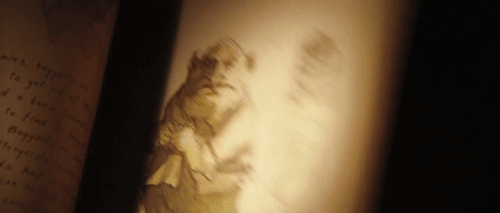
What is Fantasy?
Fantasy in its simplest term, is any form of media that diverges from the mundane reality of our ordinary everyday world in one facet or another. A story does not need to have magic, or dragons, or princesses to be called a fantasy story. While those are common motifs, in truth, all it takes to be considered fantasy is to not adhere to the real world in one form or another. Good Omens is a fantasy story, despite having no dragons or princesses anywhere. A Song of Ice and Fire has dragons and princesses, but magic is scarce and seldom ever seen. The Song of the Sea has a lot of magic, but a lot fewer dragons.

MEDIEVAL FANTASY
The story takes place in a fantastical world of the author’s design with a medieval or renaissance inspired setting, world view, and/or political structure. Renaissance Fantasy doesn’t really tend to exist on its own, so any setting with Renaissance aspects tends to just get lumped in with Medieval Fantasy. I don’t even really need to explain this one to you. It’s the most common subgenre of fantasy. A medieval fantasy does not have to be set in the real medieval period of Earth’s history, but rather, a medieval fantasy is any story set in a fantastical world that makes use of a medieval-based society as its setting.

HISTORICAL FANTASY
This is a story in which fantastical elements are included in real world historical settings. This is any historical setting where there’s a King of England but also a dragon or trolls to deal with. There’s almost this sort of unspoken rule that any story set in Ancient Greece will inevitably be Historical Fantasy. Arthurian Fantasy, Mythology Fantasy, and Fable Fantasy could all be considered subcategories of Historical Fantasy, since most instances of these genres would be classified as Historical Fantasy, though there are exceptions. As an example, Once Upon a Time and the Fables comics series are both Fable Fantasies, but are not Historical Fantasy. Likewise, Rick Riordian’s Percy Jackson-verse is clearly Mythology Fantasy, but is not Historical Fantasy. Classic examples of Historical Fantasy would include tales like Beowulf, The Journey to the West, and Robin Hood. It’s worth mentioning that technically, a story is not Historical Fantasy if it’s set in the era it was written in. However, the Illiad was set in Mycenaean Greece, Robin Hood’s rivalry with Prince John was a later addition to the folklore, and most Arthurian mythos was penned long after the supposed real world figure might have lived and died. But, any story set in a contemporary modernity, such as Percy Jackson, will eventually become Historical Fiction as time moves forward, though it clearly was not written to be that way.
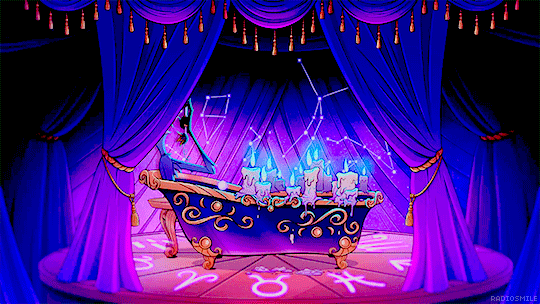
MYTHOLOGY FANTASY
Angels, Demons, Gods, the Underworld, mythological heroes, this is a supercategory that encompasses everything from The Chronicles of Narnia to Supernatural, as well as Good Omens, American Gods, Sandman, Rise of the Guardians, Percy Jackson, Paradise Lost, Helluva Boss and Hazbin Hotel, Smite: Battleground of the Gods, Teen Titans, Dante’s Inferno, and Lore Olympus. Some people get squeemish about lumping Judeo-Christian ideologies in with Mythology (even though it is a mythology) such that the Christian sub-category sometimes gets called Religious Fantasy or Bible Fantasy. But regardless, this is the category for any sort of fantastical work in which supernatural forces are at work. Some divide this section differently. For instance, some will say that since faeries are part of Irish mythology that faeries count as part of mythology fantasy, while others will argue that this is more for the religious aspect of fantasy, with things like vampires and faeries relegated to a subcategory of more generic fantasy creatures.

ARTHURIAN FANTASY
The story revolves around Arthurian mythos. Whether it’s set in the real world of Britain, a fantasy counterpart to Britain, or in some author-created setting, King Arthur is still King Arthur. Sometimes, though very rarely, Arthurian stories have little to no magic, fusing this subgenre with Historical Fiction and not Historical Fantasy. While Arthurian mythos has evolved over the years, the big players are practically household names. Most people are unfamiliar with Sir Galehaut and Sir Dinadin, but almost everyone recognizes Arthur, Guinevere, Lancelot, Merlin, and all the other big players in Arthurian folklore. However, Arthurian myth effectively spans the entire breadth of the Medieval Period, first being mentioned in the Annaels Cambriae which places Arthur in 6th Century Britain, and his stories continued to be written until Le Mort d’Arthur in 1485. Keep in mind, the Medieval Period is from 476 - 1500, and Arthurian mythos spans about 800-900 of those 1,024 years. Due to his story spanning so much time, many elements of Arthur’s story have been forgotten or quietly put aside over time. Try to tell someone that Arthur put every newborn born in the month of may on a boat and sank it to prevent the prophecy of Mordred from coming true, and you’ll probably get a bunch of horrified looks from people who swear up and down that the Good King Arthur would never do anything so cruel. Even other elements shifted around. Ask who mordred’s parents are, and you could argue Arthur, Morgan le Fey, Morgause, Anna, King Lot, and more. Depending on how deep down the rabbit hole you’re willing to go, you can read stories of King Arthur fighting his nephew Oberon for control of Fairyland. Arthurian mythos, like mythology fantasy, tends to get the curbside drive-by approach. People repeat the elements they’ve heard a million times, while never dusting off any of the lesser known elements that would give the story a breath of fresh air.

FABLE FANTASY
Technically, all Arthurian Fantasy falls under this umbrella. Fable Fantasy is the genre term for fantasy based on fables, folk tales, and folkloric figures. Robin Hood, Reynard the Fox, Fairy Tales, Mother Goose, Baba Yaga, if it has persisted through generations of storytelling, and has had a lasting impact on the cultures that know the story, it can be considered a Fable Fantasy. Any story that pulls from these elements can likewise be considered Fable Fantasy because they are pulling from these fabled origins. So, a retelling of Beauty and the Beast is a Fable Fantasy... unless the storytelling has twisted the story so much that it’s no longer in the Fantasy genre. For more variations of this genre, well-known pop culture characters, much like Robin Hood and Fairytale characters, can be considered Fable Fantasy. So, Frankenstein’s Monster, Dracula, Santa Claus, the Grim Reaper, Peter Pan, the Phantom of the Opera, the Wizard of Oz, and other commonly retold folk characters can be thought of as more contemporary Fable fantasies. As such, both Wicked and The Phantom of the Opera can be considered Fable Fantasy musicals, as well as the more obvious Into the Woods. Once Upon a Time and the Fable comic series are both modern Fable Fantasy stories. Not all Fable Fantasy narratives are retellings of classic folktales. Peter Rabbit, Alice’s Adventures in Wonderland, Peter Pan, and The Wizard of Oz have all become widely considered folkloric staples, despite being written in the 19th and 20th centuries. Over the Garden Wall, a Cartoon Network miniseries from 2014, is considered to be a modern fairy tale, despite not being an adaptation of any other story, but instead using the tropes and ideas common to traditional old-school fairy tales. When they enter the public domain, I suspect that Dr. Seuss’ characters will likewise be effectively Fable Fantasy, well-known characters that see use and reuse over and over again in other media. Shrek and Disenchantment take a satirical approach to Fable Fantasy, poking fun of Disney and other fairytale narratives and tropes.
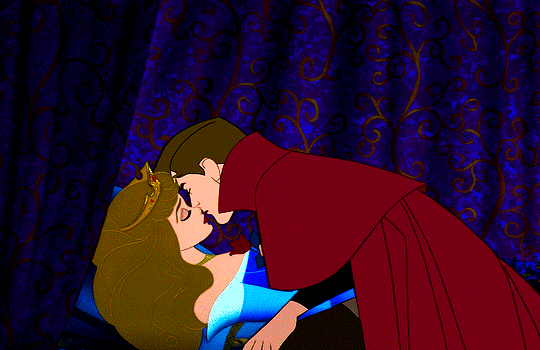
HISTORICAL ROMANTICISM
This setting often goes hand-in-hand with Arthurian Fantasy and Fairy Tales. This is any story that romanticizes and glorifies life in a historical setting. Popular variants include Medieval Romanticism, stories which romanticize medieval settings, Victorian Romanticism or Edwardian Romanticism, for stories that romanticize the time period between 1837-1913, and Period Romanticism, which is more of a blanket term that glorifies the eras popular with Period movies, namely, the 19th century, but sometimes earlier as well. Full of handsome princes, fair damsels, large palace-like castles, and knightly codes of honor, historically inaccurrate period gowns, debutante balls, and steamy Jane Austen-style love affairs, this story paints the past with the most optimistic and flattering image possible. Everything is flowery, poetic, and awe-inspiring. This is the type of setting Sansa Stark thought she was in at the start of A Game of Thrones before G.R.R Martin pulled the rug out from under her and revealed Westeros to be a Cynical Low Fantasy. By the very virtue of the company’s child-friendly marketing, Most Disney movies, and by extension, most movies set in the past aimed at children can likewise be categorized as Historical Romanticism, as they brush the darker side of history under the rug. The Princess Bride, Bridgerton, Don Bluth’s Anastasia, and most versions of Robin Hood and Arthurian mythos fall into this category. For contrast, Downton Abbey is not Edwardian Romanticism even though it tries to make life in the 1910s look glamorous, it’s also not afraid to blatantly point out the economic and socio-political issues that were going in in the world at the time. Downton Abbey does not sugar coat the darker side of history, and can therefore not be considered Historical Romanticism.

HISTORICAL CYNICISM
The exact opposite, Historical Cynicism is the name I give to settings that use the trope “The Dung Ages”. Like Historical Romanticism, the most popular variant of this category is Medieval Cynicism. These settings seek to make life in historical time periods look as miserable and depressing as possible. They are designed to make life seem bleak, undesirable, and disgusting. Monty Python and the Holy Grail and Disenchantment take a comedic approach to this, while A Song of Ice and Fire gives a more Epic Fantasy take. Sweeney Todd makes life in Victorian London look positively putrid, and that’s without the cannibalism subplot. The Witcher games seem to merge Medieval Cynicism with Dark Fantasy and Horror Fantasy. This subgenre hinges on Dark Fantasy, but the two are distinct from one another. Expect plenty of plagues, muted color pallets, a cruel aristocracy that enjoys crushing the lower classes under its heel, and mud or dung on everything.
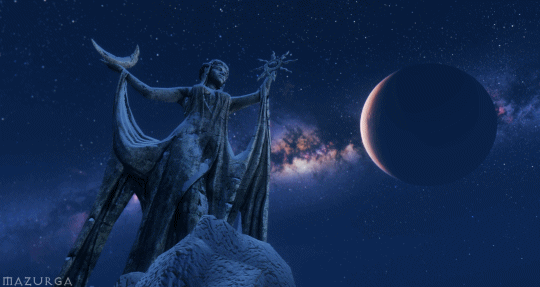
HIGH FANTASY
Magic and fantastical elements are abound in this setting. Expect wizards, dragons, fantastical races, and more. Very frequently overlaps with Epic Fantasy, though they are different. The Lord of the Rings is classic High Fantasy. Most Dungeons & Dragons settings are also High Fantasy, as is The Legend of Zelda. Avatar: the Last Airbender is a High Fantasy Wuxia show, though Legend of Korra veers more toward Historical Fantasy, Steampunk, and Magitech Fantasy with its 1920s Shanghai meets New York City hub location of Republic City. The Elder Scrolls is also a High Fantasy, with plenty of elven races, the Beast Races, and star signs that actually impact those born under them. Each province has its own sort of vibe or subgenre, with High Rock being more Medieval Romanticism while Skyrim is more Dark Fantasy or Medieval Cynicism, but as a whole, Tamriel falls under the High Fantasy umbrella.

LOW FANTASY
A medieval setting where magic and fantastical elements are rare, if not nonexistent. A Song of Ice and Fire is an excellent example. Magic is real and does exist, but it only rarely comes into play. Magic is extremely scarce, and most people one might meet are humans. Even the sight of someone casting the simplest spell is so rare in Westeros that it’s practically unheard of, and the few supernatural elements that do exist in the setting live far out into the wilderness, rarely being seen by people. It’s quite rare to find completely fictional fantasy settings with no magic whatsoever, but they do exist.

EPIC FANTASY
This is any fantasy story on an epic scale. I’m talking well over 50+ named characters. A Song of Ice and Fire, The Wheel of Time, Lord of the Rings, all of these are Epic Fantasy. Yes, these stories usually end up with long book series and a lot of words behind them, but I am defining a genre, not a reading level. Epic Fantasy is about scope, not page length. Common sights in Epic Fantasy are grand battles, multiple POVs, world-spanning events, extremely high stakes, very powerful players in the narrative, and The Final Battle Between Good and Evil.

QUEST FANTASY
Any fantasy work which is primarily driven by The Epic Quest. Often overlaps with Chosen One narratives. Lord of the Rings, Eragon, The Legend of Zelda, Avatar: the Last Airbender, and the Percy Jackson books are all examples of Quest Fantasy. The bulk of the narrative is centered on The Journey and the trouble the heroes run into along the way, or are otherwise all about The Adventure, not the destination. Our band of heroes have a goal given to them and the story is focused on following the heroes on their journey. However, this is not strictly a Chosen One category. The Legend of Korra is a Chosen One Fantasy, but is not a Quest Fantasy because Korra’s main objective changes every season. Percy Jackson toes the line due to the Oracle’s prophecies, but I wouldn’t call him a Chosen One because his birth wasn’t written in the stars or anything. He just happens to be a child of Poseidon and at the center of the story. If you switched him out for Nico di Angelo or Jason Grace, the story is still functional. In Lord of the Rings, Aragorn is the True King, but Frodo is the protagonist, so I wouldn’t call Lord of the Rings a Chosen One Fantasy either. This can also tip into other genres. Monty Python and the Holy Grail is a Quest Fantasy. The entire premise of the movie is Arthur and his knights questing for the Holy Grail. Likewise, The Princess Bride is all about Wesley’s quest to rescue Princess Buttercup from Prince Humperdink. Treasure Planet is a steampunk quest fantasy telling the story of Jim’s search for Flint’s treasure, where the journey there is the bulk of the story. Sinbad: Legend of the Seven Seas is a quest fantasy with elements of Historical Fantasy and Mythology Fantasy all about Sinbad’s perilous voyage to the edge of the world to save his friend’s life.

DARK FANTASY
It’s like normal Fantasy, but bleaker and darker. The Witcher and Skyrim are good examples of Dark Fantasy, where monsters roam the wilderness, and people live in fear of the unknown beyond the safety of their villages. The general tone is more cynical, desolate, or hopeless. Some Dark Fantasy is more about just being gloomy or creepy. The movies Labyrinth and Dark Crystal are two good examples of a Dark Fantasy that’s less bleak as they are weird, yet still dark. The Black Cauldron is a perfect example of a Dark Fantasy with a dreary and macabre aesthetic paired with a genuinely horrifying necromancer villain. Pan’s Labyrinth is another good example of a Dark Fantasy. Over the Garden Wall and A Tale so Dark and Grimm are both Dark Fantasy stories as well as Fable Fantasies, reveling in the darker aspects of Grimm fairy tales.

HORROR FANTASY
It’s like Dark Fantasy, but scarier. Expect there to be horrifying monsters unlike any seen on earth. Your protagonist is probably either hunting or being hunted by something horrible. Either a monster is trying to kill them, the world is trying to kill them, the gods or demons are trying to kill them, or magic is trying to kill them. Again, The Witcher is a great example of Horror Fantasy. Geralt is a hunter of monsters, and often fights things like Werewolves, ghouls, wraiths, and lesheys. Red Riding Hood (2011) is a great example of a vaguely medieval Horror Fantasy. Depending on where you stop the line at what’s horror, what’s fantasy, and what’s Horror Fantasy, you could justify just about anything as Horror Fantasy. From The Elder Scrolls V: Skyrim with its undead Draugr and vampire clans, to Resident Evil VII with its vampires, or even certain Scooby-Doo! media (though Scooby-Doo! is certainly on the mild end of horror.)

PARANORMAL FANTASY
Unlike Dark Fantasy or Horror Fantasy, Paranormal Fantasy takes horror elements and spins them to be more romantic. This is where you’d slot in romantic or atmospheric ghost stories. Tales of witches and vampires in a macabre setting where they’re not the villains. The Addams Family fits the Paranormal Fantasy, as does Sweeney Todd, Sleepy Hollow, The Phantom of the Opera, Hotel Transylvania, most Scooby-Doo! media, Beetlejuice, the Halloweentown movies, The Nightmare Before Christmas, or Hocus Pocus. Basically, if it could be a child-friendly Halloween story, or was made by Tim Burton, it’s probably Gothic Fantasy. I guess you could also call this Monster Fantasy, Gothic Fantasy, or Spooky Fantasy.
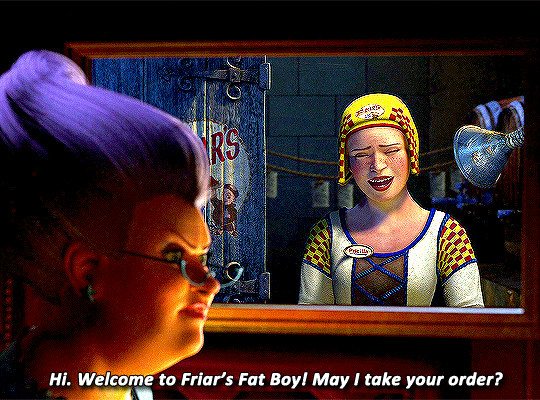
CONTMPORARY FANTASY
The setting is medieval with castles and princesses, but there’ll also be modern conveniences or nods to pop culture in the land and setting. Dave the Barbarian is a good example of this. The royal family are all barbarians (which basically just means vague warriors that wear fur loincloths), but then they also have malls, and Dave made a megaphone out of a squirrel, some string, and a megaphone. Shrek does this too, especially in Far Far Away with nods to Starbucks and Burger King, among other modern franchises. Disenchantment also uses this as a basis for comedy. Typically, Contemporary Fantasy only uses modern conveniences in a medieval setting as more or less sight gags, punchlines, or to poke fun of corporations and consumerism. These are also the fantasy stories most likely to reexamine tropes and shine a critical light on the genre, whether by showing the farm-boy turned king being royally inept, the mental issues caused by locking the princess in a tower for years of her life, or how quickly princesses married the first man that came along without so much as a conversation beforehand.
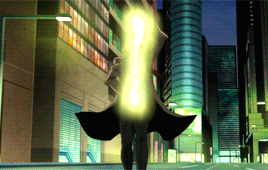
URBAN FANTASY
The wizard has a smartphone, the prince has a Grindr, and the city watch patrol the streets on motorcycles. A standard fantasy world has come to the modern age, with skyscrapers, internet, cars, and cellphones. The familiar world gives the audience a firmer foot to ground themselves in this sort of story, compared to something set in the past, but it has its own hurdles. Namely, a modern world still needs a rich history. You also need a story that can’t be solved with a gun and an internet connection. Urban Fantasy is a very broad genre, from Hidden World Fantasy like Percy Jackson or Harry Potter, to Merged World Fantasy like RWBY. There’s also some head scratchers like the Warriors Cats books. It’s definitely Urban Fantasy. A cat society living in the forest is a fantasy, and the story is set in our modern contemporary world. But labeling the series beyond Urban Fantasy is where it gets tricky. Isekai borders on Urban Fantasy, as the magical overlaps with the modern world. The Magic Treehouse and the Arthur Spiderwick Chronicles are two great examples of Urban Fantasy in children’s literature. Goosebumps is Urban Horror Fantasy.

ISEKAI FANTASY
These are stories in which an ordinary human (or group of humans) are transported to another world in order to learn a lesson, grow, and come back home wiser, stronger, and ready to face the problems they ran away from. The Wizard of Oz, Peter Pan and Wendy, Alice’s Adventures in Wonderland, as well as movies like Stardust, Coraline, and Spirited Away, or TV shows like Over the Garden Wall, The Owl House, and Amphibia are all prime examples of this type of story. The Chronicles of Narnia is an excellent example because as the series goes on, the older Pevensee children stop needing to go back to Narnia. By Voyage of the Dawn Treader, Peter and Susan have learned all they need to from the other world, and don’t go back, leaving only Edmund and Lucy to go with their cousin instead. Because their arcs are over, they have no reason to return.

ROMANCE FANTASY
It’s a romance novel with supernatural elements. Usually, it’s a human falling in love with something inhuman, which we often call Paranormal Romance. However, this can also include stories of a fairy falling in love with a dwarf, so there’s a wider net here. This isn’t just a story with a romantic subplot, this is your Romeo and Juliet type love stories. Your Beauty and the Beast retellings. The romance is the main plot, and the supernatural elements simply make the romance more exciting or the problems of the couple more entangled in cultural baggage. Obviously, Twilight is a popular example, as is The Cruel Prince, The Captive Prince, and Of Beast and Beauty by Stacey Jay.
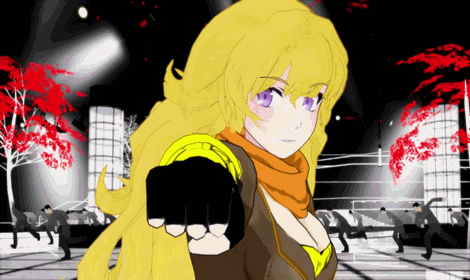
MAGITECH FANTASY
This is when a fantasy setting has magic-powered technology. The guardians and Divine Beasts from Breath of the Wild are a fantastic example of Magitech in a medieval fantasy setting, as are the steam-powered automatons of the Dwemmer in The Elder Scrolls. The Legend of Korra sort of fits here. The world of Avatar has advanced to include airplanes, cars, and radios, none of which are powered directly by bending, but benders do work in power plants, performing lightning bending to generate electricity. It’s certainly a middle ground between steampunk and magitech fantasy. However, the world doesn’t have to necessarily include technology, any setting where magic is a power source for anything can work. Jak and Daxter: The Precursor Legacy is a great example of Magitech Fantasy. Eco is a natural magical resource that give magical powers and effects. So, having doors that open when exposed to the electrical energy of blue eco makes sense. And while it’s never stated, Jak II has many automatic doors in Haven City that may very well run on an electric power grid fueled by blue eco veins. But eco largely gets dropped in the sequel games in favor of guns, though the guns themselves may actually be powered by eco as well. So it’s hard to say. RWBY surprisingly fits into Magitech Fantasy. Like Eco, Dust is a magical natural resource that can be used to create magical effects. The world is full of airships, shape-changing weapons, bullets and other weapons being infused with dust to give them magical effects, and Penny, a definitely real girl.

GASLAMP FANTASY
This is what happens when Steampunk has just enough fantasy elements to land in the Fantasy section. Gaslamp Fantasy is any fantasy story set in the era of gaslamps, while still incorporating fantastical elements. Dracula, Springheel Jack, Mary Poppins, Peter Pan, Sherlock Holmes vs Dracula, basically, as long as it’s set in a Victorian setting and has supernatural elements, it counts as Gaslamp Fantasy. However, it’s definitely one of the less popular subgeneres, and I couldn’t really name any others.
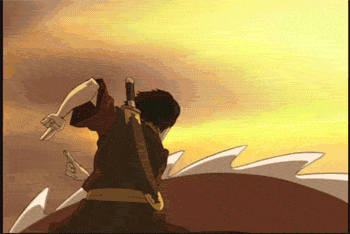
WUXIA
A fantasy setting that focuses more on East Asian history, folklore, and mythology to craft its setting. Wuxia is a broad term, including everything from Spirited Away to Crouching Tiger, Hidden Dragon and Dragonball. However, often times in fantasy, European-inspired regions are complicated and diverse, while Asian-inspired regions are homogenizing, if not orientalist. We can differentiate Irish, Scottish, and Welsh folklore from English, but somehow, not treating all Asian cultures like they’re the same is too taxing for some writers. So, if you’re going to tackle writing Wuxia Fantasy, do your homework, try to make the cultures thorough and intricate, and don’t profess yourself an expert on another person’s culture if you’re not Asian yourself.
316 notes
·
View notes
Note
Hey, Mark! Normally we visit planes that have one source of inspiration, like Kaldheim that is inspired by Norse mythology, or two sources that are somewhat similar, like Eldraine that's inspired by fairytales and Arthurian legend, both connected to European folklore, but could we visit a plane whose sources of inspiration are very different? Like a plane inspired by ancient Rome and Wild West at the same time, for example?
Nothing is off limits, but the world needs to feel cohesive.
77 notes
·
View notes
Text
Why play Arthurian Tale: Camelot?
Find Love:
💕 Arranged marriage trope!
😍 Body guard trope!
😑 Strong protective love interest!
😉 Morgana. (Need I say more?)
Allign with Camelot:
✌️Avoid war!
🥰 Help Camelot's allies stay friends!
🌾Procure advantagous trade deals!
Allign against Camelot:
⚠️ Go to war!
⚔️ Turn Camelot's allies against each other!
🥹 Make your father proud!
Personel Development:
🗡️ Become a knight!
🕵️ Establish a spy network!
🏹 Become an archer!
📚 Become a scholar!
🧑⚕️ Consider a career as a physician!
#choicescript#hosted games#arthurian#interactive fiction#arthurian legend#arthurian literature#arthurian mythology#if game#arthurian fantasy#dashingdon
66 notes
·
View notes
Text
Zestiria and Shinto

I think it’s very understated that Zestiria takes a lot after Shinto (compared to say, how people keep bringing up its Arthurian inspirations, despite those inspirations being superficial relatively), especially when it’s the essence of the game itself, but I suppose it’s easy for it to go over people’s heads if they don’t truly understand Shinto itself, which to be fair is a concept that is not equivalent at all to the religions widely known in the modern West.
As a preface, if I have to be quite honest, I’m not too fond of the localization of the terms in Zestiria. In isolation, “Shepherd” is a fine translation of “導師”, they both more or less mean a person who guides, though I’m not sure how much of that idea the word manages to get across. However, coupled with “天族” being localized as “seraphim”, the game lore becomes connotated with Biblical implications, which is unnecessary and not at all what is intended, though I’d have been hard pressed myself if I were tasked to localize these terms in a way that could convey the original intent in English, but that’s not the point. The point is, I believe this loss in translation contributes to the misunderstanding, and besides, despite what you might think, the seraphim are not angelic beings, especially of the Christian kind.
With that out of the way, I would also like to clear up something else: religions and religiosity, as defined in the Western culture, do not readily apply to Shinto. It has no single founder, no canonical scriptures that are authoritative like the Bible, it has flexible moral code (or rather, it lacks a rigid moral code) due to its nature, and it is not at all a monolithic system; it’s not a unified system where the people who adhere to the faith proclaim themselves as Shintoists, because it doesn’t work that way. It is literally the “way of the kami” (神道) in that the term is used to reference the practice of worship of kami. It is not at all odd for modern Japanese people to practice this kami-worship and the rituals associated with it while also practicing Buddhism or even Christianity, for example.
The two essential, “sacred” texts of Shinto, Kojiki (古事記, literally “Records of Ancient Matters”) and Nihon Shoki (日本書紀, literally “Chronicles of Japan”), are basically history books (and they were commissioned to be compiled by the government), but they do not encompass everything there is to know about Shinto itself, since there are other books chronicling other kami as well, especially local ones. Even between the two books, mostly because of the differences in intended audience and purpose, there are naturally differences in details and interpretation of the ancient Japanese mythology, some even are contradictory (there are even differences in variants of Shoki accounts of the myth, so let alone Kojiki and Shoki). Also, I say history books (and they for the most part are history books indeed), but it is more apt to say that they are written chronicles of Japanese myths, legends, oral traditions, folklores, and such, but I would say Nihon Shoki is the more “objective” of the two. I think this part inspires Celestial Record as well as Lxi himgnowlot uz Yniitruh (or “The description of Glenwood” in English), the travel notes included as one of the special items in the LalaBit Collector’s Edition of the Japanese version of the game.
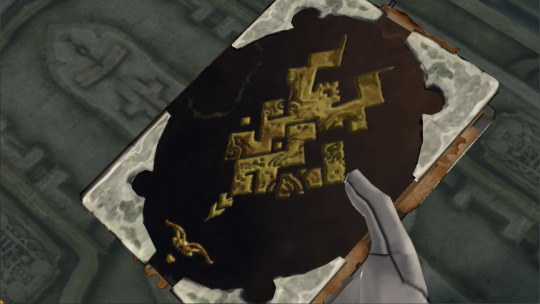
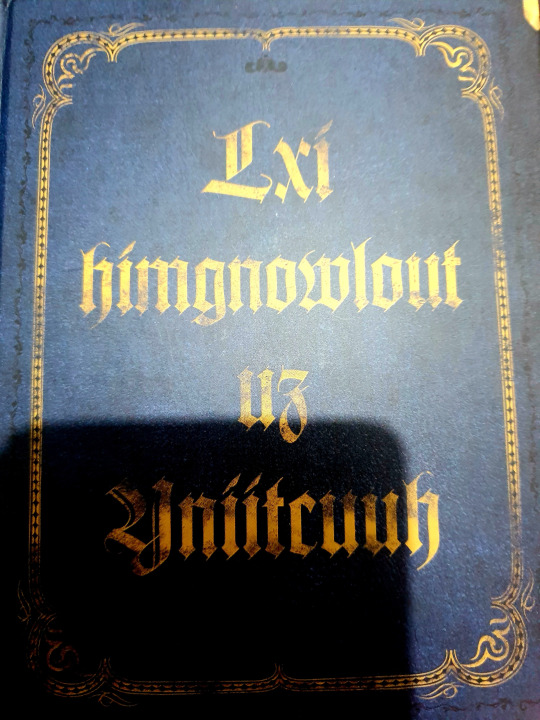

Already you can see how the historiography of Glenwood is influenced by Japanese historiography, because of the belief that has been there all along since the prehistoric times. The subjective interpretations of the situations or even origins that are not immediately knowable, especially, since both of these books are clearly written by humans (that fact isn’t hidden at all), make them feel more like they act as notes of the world, just like Kojiki and Nihon Shoki, and because of this subjective interpretation method, differences are bound to happen, even before getting to the differences of interpretations in individual readers. (By the way, the Japanese name for Celestial Record, 天遺見聞録, clearly implies this too, if translated a bit more literally, it means “the records of what is seen and heard as left behind in the Celestial.”)
Now, we get to the core of this, namely kami (神). Kami is often translated as simply “gods”, but this is, again, very misleading and not at all a good explanation of their nature. Kami, unlike the god(s) in other religions, do not come before or after the cosmos, they are the phenomena themselves and they are ubiquitous. A popular descriptor for them is “spirits or forces of nature” but even this is a simplification of what they really are. Kami describes the mind (心), an underlying principle (基本的原理), the divine to be worshipped (祭る), to be believed in (信じる), to be respected (崇める), to pray to (祈る), to be served (仕える), to be devoted (捧げる), to be given gratitude (感謝する), but most of all, kami possesses an eminent quality that is out of ordinary, that inspires the feeling of awe (畏怖) inside us all. To be in harmony with these awe-inspiring aspects of nature is to be conscious of the way of kami, and all phenomena are candidates for this designation, e.g., the sun, moon, mountains, or even great persons, heroes or leaders. However, to experience the kami presence of any one of these aspects of nature requires a pure and bright heart (清き明き心), which is an emotional, mental, and volitional condition that is not easily attained.
Here, I want to sidetrack to one of the above descriptors, that is, kami are to be worshipped (祭る). If you notice, it is the basic verb form of the word “festival” in Japanese, “祭り”. This is because one of the most crucial deeds toward kami in Japanese view is 祭る. The Japanese tend to be more religious when it comes to ceremonies than to the daily life. Worshipping kami in Japanese sense is different from other religions; whereas for some faith, the worshipping rite seems solemn and preoccupied, on the contrary, many Japanese worshipping ceremonies are very energetic and festive. Though the sacrament can be broken down into two parts: solemn ceremonial ritual and exuberant celebration, only the second part allows many people to participate more. In Zestiria, one of the biggest examples of this is the Sacred Blade Festival (聖剣祭).

But back to kami as beings. They are noble beings to be venerated, and there is a concept of Yaoyorozu no Kami (八百万の神, literally Eight-Million Kami) because there is an infinite number (eight million represents uncountable, just like how 8 as a number is often used to describe “infinity” in many cultures) and it is impossible to know them all (and it’s not like that uncountable number is static either... since humans can turn into kami and kami can inhabit any kind of object, that number naturally expands). Of course, with that many number, kami can vary from one another—they’ve been described as jinkakushin (人格神), or divine beings that have human-like qualities in that they have personalities and emotions of their own. This means that there are both benevolent kami and evil kami, so to speak. They can both bring blessings or harm to humans, and this duality means that kami are both revered and feared. Again, awe-inspiring aspects of nature. Which means Shinto as a religion isn’t exactly concerned with the afterlife like many religions, but with the nature itself, with the current life, as it is our world that is sacred. This is also true for the seraphim and the world in Zestiria.
Another term that is borrowed from Shinto is kegare (穢れ), which I usually translate to “taint” but in the context of localized Zestiria, it is known as malevolence. This, I feel, is another case of the localization causing even more misunderstanding than necessary; the kegare in Zestiria might not map 1:1 to the same concept in Shinto, but they are both fundamentally not a form of moral judgement, and whether the kegare itself is caused by a deliberate act, as for example in the case of a crime, or by an external event, such as illness or death, is secondary. As such, it is wrong to equate it to, say, Christian idea of sin, which malevolence, as a word that inherently suggests evil, kind of conveys to people. Kegare in Shinto is impermanent, as they can be remedied through purification. The concept of purity in Zestiria upholds the same quality being uphold by Shinto, namely, “真” which can be translated as “sincerity” but more literally, it means “truth.” Being true to yourself. This idea is reflected in the aforementioned “pure and bright heart” (“清き明き心”) since “pure and bright” in this case implies something that is transparent, that which is clean and clear, from the kanji themselves (to easily explain this more: 清 means “clear” and the Japanese word for transparent, for example, is 透明, which contains 明).

The Armatus (神依, kamui), as the highest power a Shepherd could have and described as the divine might (神威, which can also be read as kamui), is then, alikened to kamioroshi (神降ろし) in Shinto. Like the name implies (it literally means “descent of kami”), kamioroshi is a divine invocation held in that deity’s honor, to take possession of the one who invokes them. Since seraphim, who are based on kami, are forces of nature beyond mortal understanding, the Armatus again incites both reverence and fear of its powers.
Speaking of the seraphim being said to be beyond what humans could possibly understand, I believe this is partly why the true nature of them isn’t fully revealed. Details like how they’re born (or reborn), how they grow, what they actually are... these are meant to be mythical. We will never know, we can never know for sure. Humans tend to try to make sense of their surroundings, but there are just some things out there that will remain as mysteries to us no matter how much we try to uncover it.
(This applies as well to humans not knowing their own true nature... for example, the true nature of malevolence, said to be an irony of the contradictions of humans.)
――天族について詳しく教えてください。
山本 人から転生したという天族がいたり、いくつかの方則側はあきらかになっていますが、明確にこういう種族だよ、ということはできません。どちらかというと、神霊のような存在となっています。だから、天族たちは自分はこうなんですとか転生したんですと言っていますけど、実は何をどうしたらそうなるかという部分は非常にあいまいだったり、ケースバイケースだったりします。そういう、ルールで割り切れない部分を持った種族ですね。
――Please tell us about the seraphim.
YAMAMOTO: There are some seraphim who were reincarnated from humans, and some rules about it have been revealed, but it is not possible to say clearly what kind of race they are. If anything, they are more like divine spirits. That’s why, the seraphim are saying that they are like this or that they are reincarnated, but the truth is, the part about what to do to become like that can be very ambiguous or in a case-by-case basis. They are the kind of race that cannot be comprehended by mere rules.
――天族の成長は自身の思いにかかわってくるのですか?
山本 自分の力の強い時期まで成長するんじゃないかという推測はありますが、ここも実は法則性はないんです。
――Is the growth of seraphim related to their own thoughts?
YAMAMOTO: There is a conjecture that they will grow until they reach the peak of their own strength, but again, there are really no strict rules here.
And I understand how and why this would leave some people dissatisfied because they want to fully understand the inner workings of a fictional world to make sense of it, however at the same time, I think it’s not necessary for us to try pin down every detail to understand something holistically. Sometimes it’s fine to just feel it, to leave some things to our imagination even if it might seem hard to make sense of, but part of being humans is to appreciate beauty in these contradictions as well. Not everything has to have [human-knowable] rhyme or reason to it.
(While we’re at this, I would like to express a very subjective, very personal, and admittedly very biased opinion of mine: This is why I wish people would’ve been more appreciative of Zestiria as a standalone separate from Berseria, and not rely on Berseria to fill in the blanks of Zestiria. Berseria, to me, has a very distinct feel from Zestiria in the context of this, as the malakhim of Berseria don’t inspire the awe in me like how the seraphim are depicted in Zestiria. Everything in Zestiria that is supposed to evoke that sense of wonder, like the seraphim, Armatus, etc. is gone in Berseria, which tries to explain everything in a really mechanical, almost scientific way, and that beats the purpose of Zestiria with all its fantastical spirituality and vagueness that a lot of people hate but I personally really adore. And sometimes they can’t even do that right, as a lot of Berseria explanations directly contradict what is shown in Zestiria. This is also why I think intricate, overexplained worldbuilding is overrated; some details are better left hidden, imo. Even hidden is plain sight is better than directly explaining it to us.)
Of course, I can’t adequately explain everything that is inspired by Shinto in Zestiria, and this barely scratches the surface (and that’s not counting inspirations from other myths, religions, and philosophies like Arthurian Legend, Buddhism, Daoism, etc. that are also in the game), but I hope this can give you the rough idea! Zestiria, I feel, is a game that puts a great emphasis on the wonders of its world—it’s not that everything that we know is all there is to the world, and this world has lived for a long time, unimaginably so by humans, so there’s bound to be some things that we just don’t know, we just can’t know, but have been there all along, and you can feel them even if most of the times you can’t put it into definite words. If you think about how vast the world is, and that it keeps evolving in its vast history, some unrecorded... we become more aware and appreciative of how beautiful the world really is. And in the case of Zestiria, this is reflected in the curiosity of Sorey, the protagonist, of the world, along with its history, that opens up before him. The legends have and will always live, and someday they will become “hope.”
#tales of#tales of zestiria#mino rambles#REALLY long post#basically my zestiria lovemail#as a side note: i do think them including arthurian legend inspirations is their way to evoke similar feel to this to western people#what the devs probably don't know is that myths work and feel differently in different parts of the world#so it probably isn't effective in bringing out that sense of wonder#since hase and baba expressed concerns about not wanting zestiria to be TOO japanese#mino talks zesty
99 notes
·
View notes
Text
Okay so a second take on your question,@themousefromfantasyland ; because my first answer was a bit of garbage (I am not good at making answers out of the blue).
What counts as a fairytale? What is a fairytale?
The most limited and narrow definition you can have are the classical works explicitely referred to or written as fairytales: "contes de fées" in French, "märchen" in German. This means the traditional stories of Perrault, Grimm and the like. And in this narrowest definition you can go even more narrow depending on which side of the "purists" you are. Some are strictly focusing onto folkloric fairytales and folktales, and thus reject literary fairytales like Perrault's or Andersen's ; others will defend that the fairytale genre was a literary invention first and foremost, and will classify Grimm or Joseph Jacobs' work as folklorism. And this raises the question of the Italian fairytales, Straparola and Basile, the Pentamerone and the Facetious Nights: are they fairytales, or proto-fairytales? Because the term "fairytale" was invented by late 17th century France, "conte de fées", and as such, can stories written before that be considered truly fairytales? For some these Italian stories are proto-fairytales, for other full fairytales. But you get the idea.
On the other side of the spectrum of "What is a fairytale?" you have Bill Willingham's approach through Fables. Aka: everything is a "fable". In his fictional world, fairytales and folktales are just the most prominent and famous of those "fables", but they also include all forms of folklore and mythologies in the world ; all literary works that had a deep cultural impact (from Arthurian tales to Sleepy Hollow) ; and even urban legends and modern folklore. Basically, any type of fiction is a "fable"...
And honestly, expansions and overtures are perfectly possible between those two extremes. The entire question is: can you justify this expansion? And what tone will it give your fairytale selection?
If we consider a "fairytale core" made of all the classic literary and folkloric fairytales... And I am not talking here about extending fairytales to other folktales or to literary imitations, pastiches or parodies. But rather...
Can one include the Arthuriana and Arthurian tales into fairytales? Certainly! Because an entire branch of French literary fairytales, starting with madame d'Aulnoy and others, the famous "knight in shining armor, and princess in a tower, and dragon to be killed" type of fairytales, was inspired by Arthurian romans and medieval romances and other medieval tales of knights such as in the lais of Marie de France.
Can one include Greco-Roman mythology, or Norse mythology, in fairytales? For sure! French literary fairytales were also heavily inspired by Greco-Roman mythology ; fairytales of Nordic countries rather have roots in Norse mythology (trolls and dwarfs and elves) ; the oldest depictions and "prototypes" of famous fairytale types are always found in mythologies (Psyche's tale is the mother of a good bunch of fairytales, I might make a post about it)...
Can one include "fables" as in Aesop's fables or La Fontaine's fables in fairytales? Yes! Because there was a historical confusion for a long time between "fables" and "fairytales" meaning the two were very often confused.
Can one include nursery rhymes in fairytales even though they have nothing in common? Yes! Because in the British literature and culture, figures such as Jack, the goose with golden eggs, or Mother Goose, ended up forming a bridge and common element between fairytales and nursery rhymes.
Can one include famous children fantasy, or very influential children-works involving magical elements? Yes, it is possible! Because these stories were often heavily inspired by fairytales, or use fairytale tropes and codes, or were deconstruction of fairytales. The Wizard of Oz was originally written as the "first American fairytale", while trying to deconstruct typical fairytale cliches. Disney itself helped cement and spread around the idea that some famous children literature or children fantasy works were tied to fairytales (Pinocchio, Alice or Peter Pan, among others).
Can things such as the medieval Reynard cycle be considered part of fairytales? Yes, again! Because the stories of the Reynard cycles are also found around and across Europe as either "animal fables" or as "animal folktales" (the big classifications of folktales has an entire section for animal folktales, which are just Reynard stories with the name of the characters removed) ; and there is this connection to the folkloric figure of the talking animals (the talking fox or the talking wolf forming bridges).
Can werewolf tales or vampire tales be included in fairytales? Yes! Because there is a lot of folktales that blur the line between the two, and many "folkloric fairytales" that are just vampire tales or werewolf tales...
Honestly, the fairytale genre can be expanded in any direction as long as you have a clear justification and a clear goal in mind. The walls of folklore and fiction are thin and movable, and it is for you to build your maze of tales. Anything is possible.
But in return, are you forced or obliged to add all this to your fairytales? Certainly not! A fairytale means something different for everybody, everyone has different references, everyone has a different approach to folklore or had different childhood experiences. As such, some people will agree for example that yes, Dracula or Frankenstein can be mixed very well with traditonal fairytales, while others will scream they have nothing in common. Some will feel it is natural to have fairytales as expansions of old mythologies, while others will prefer keep them separate. Some dislike having modern works like Oz or Narnia or the Alice in Wonderland stories be confused with traditional Perrault or Grimm fairytales ; others dig it and were raised on the idea they were all the same.
It is all a question of personal appreciation, and honestly there is no way to go wrong with this... As long as the person who does this knows what they are doing, why they are doing it, and has some knowledge of the original material, and doesn't just do things out of misinformation or "Well everybody does this, I'll do it too without thinking much about it".
35 notes
·
View notes